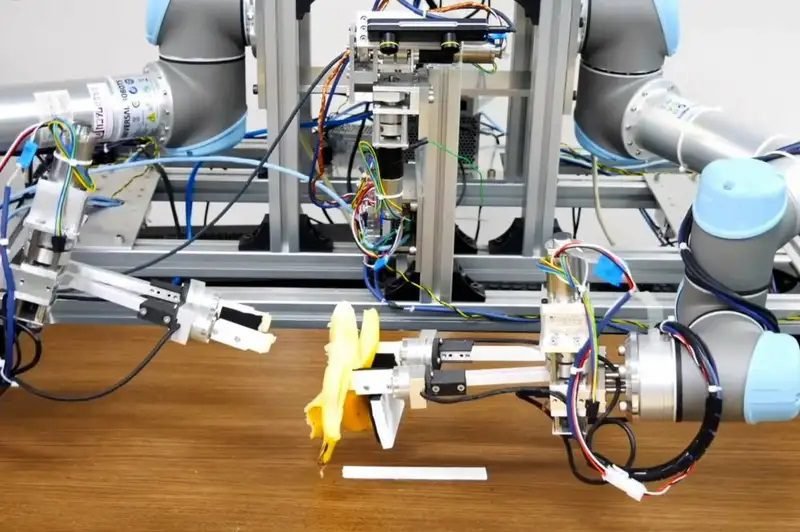This is a simple task for humans, but for robots, it’s a big challenge. The University of Tokyo built a banana peeler robot.
Source: New Scientist
A robot trained by machine learning that imitates a human demonstrator can successfully peel a banana without smashing it to smithereens.
Handling soft fruit is a challenge for robots, which often lack the dexterity and nuanced touch to process items without destroying them. The uneven shape of fruit – which can vary significantly even with the same type of fruit – can also flummox the computer-vision algorithms that often act as the brains of such robots.
I have already written a post about machine vision.
Introduction to machine visionClick here
Heecheol Kim at the University of Tokyo and his colleagues have developed a machine-learning system that powers a robot, which has two arms and hands that grasp between two “fingers”.
First, a human operating the robot peeled hundreds of bananas, creating 811 minutes of demonstration data to train the robot to do it by itself. The task was divided into nine stages, from grasping the banana to picking it up off the table with one hand, grabbing the tip in the other hand, peeling it, then moving the banana so the rest of the skin can be removed.
For broad movements that are unlikely to damage the banana, the machine-learning model maps out a trajectory, mimicking what a human does without much thinking. But when the arms are required to precisely manipulate the banana, the system switches to a reactive approach, where it responds to unexpected changes in its environment.
In tests, the robot was able to successfully peel a banana 57 per cent of the time. The whole process takes less than 3 minutes.

“What is really interesting in this case is that the process that a human uses has been carried over into the training of the robot system through the deep-imitation learning,” says Jonathan Aitken at the University of Sheffield, UK.
Kim says his approach is data-efficient because it uses 13 hours of training data rather than hundreds or thousands of hours. “It still requires quite a lot of expensive GPUs [graphics processing units], but by using our structure, we can reduce the large amount of computation [required],” he says.
Aitken would like to see how the robot handles fruit that is more misshapen. But with finer motor control, it could work even better, he says. The technology won’t simply be used for bananas, however: the goal is to train a system that can more generally handle tasks that require fine motor skills.
The video of robot peeling a banana, it’s still much lower than a person. In the first half, video’s speed is 2 times faster and on second half it’s 4 times.



